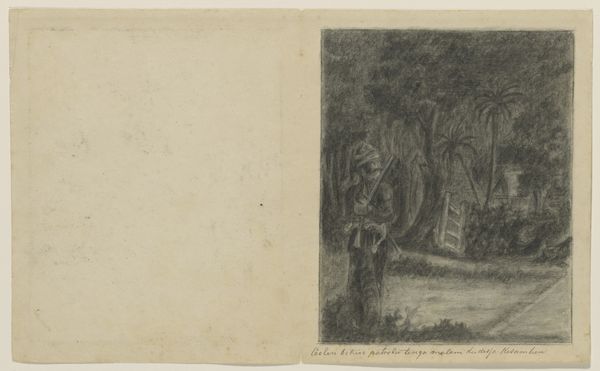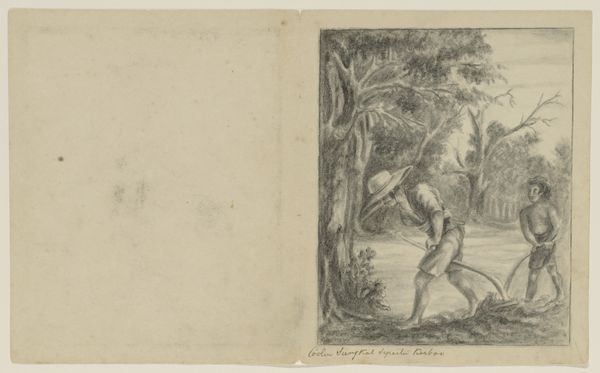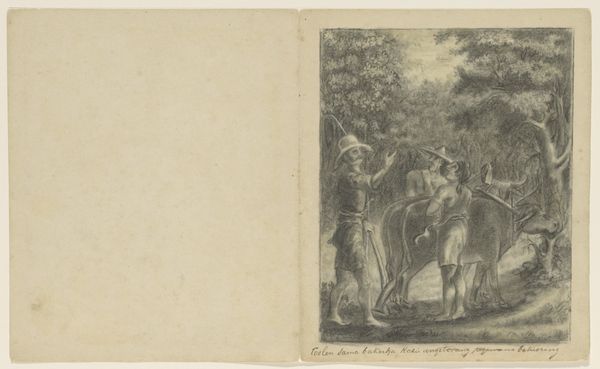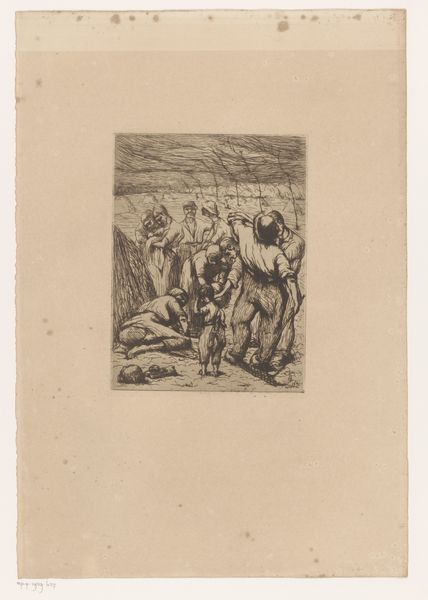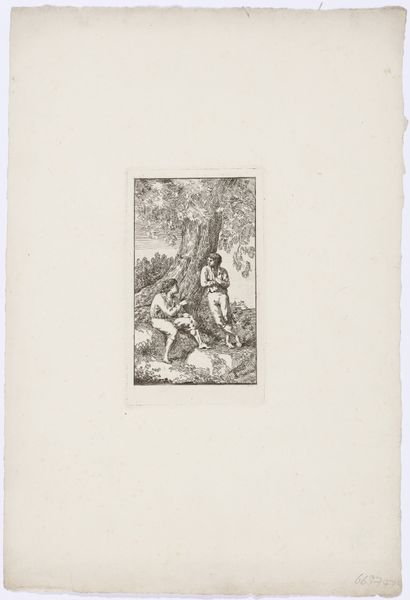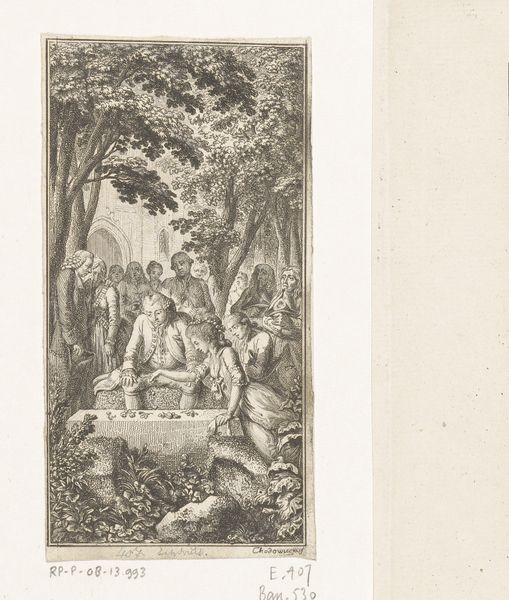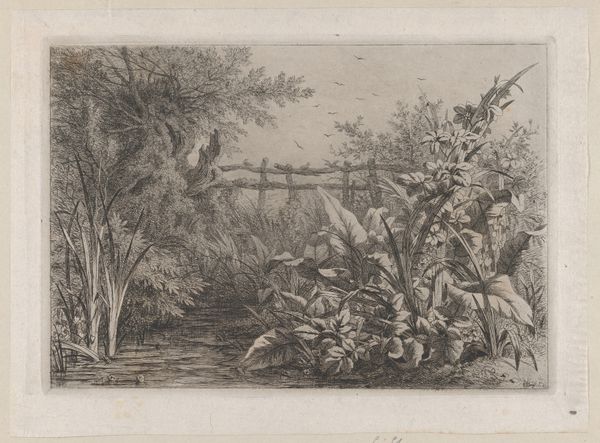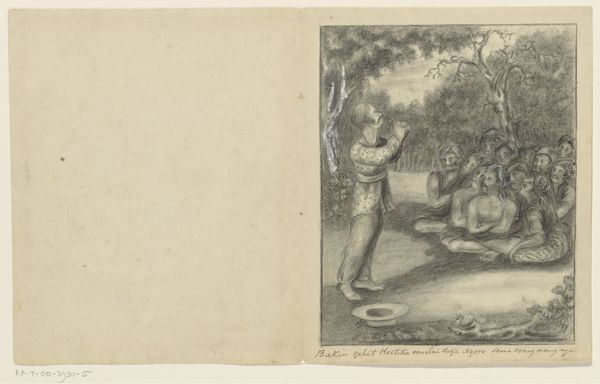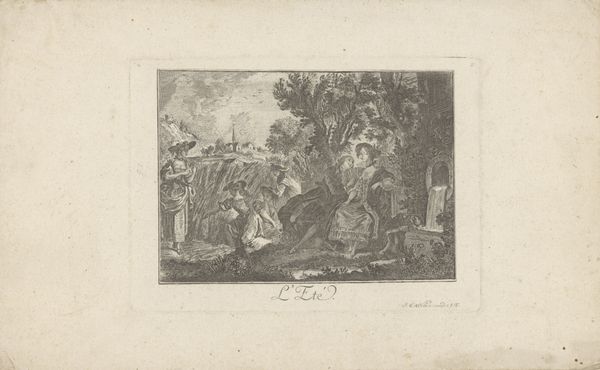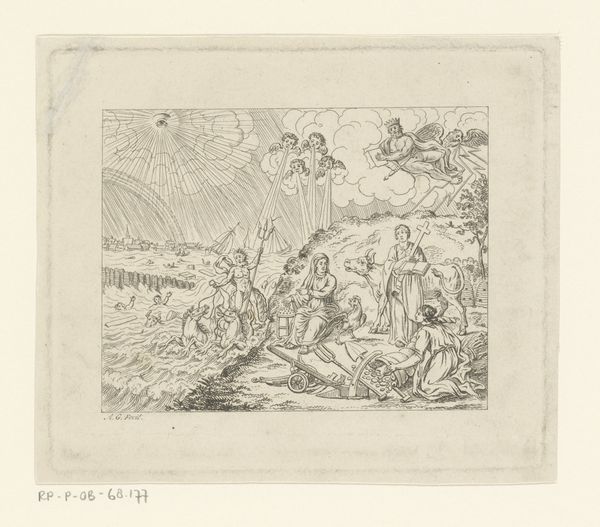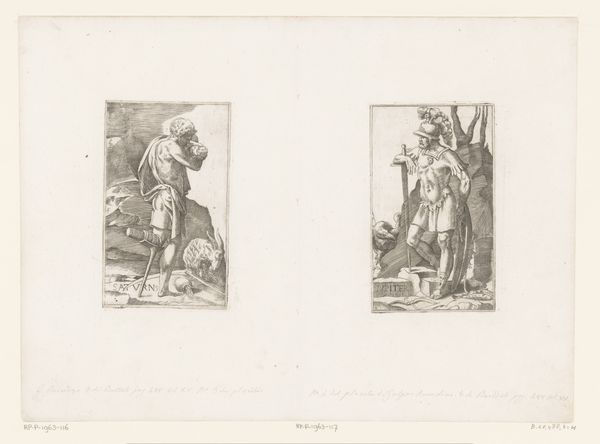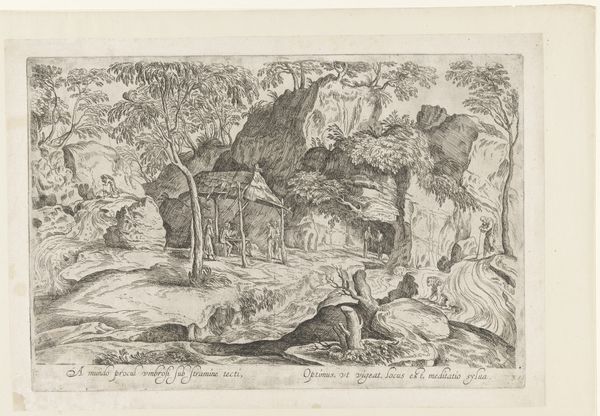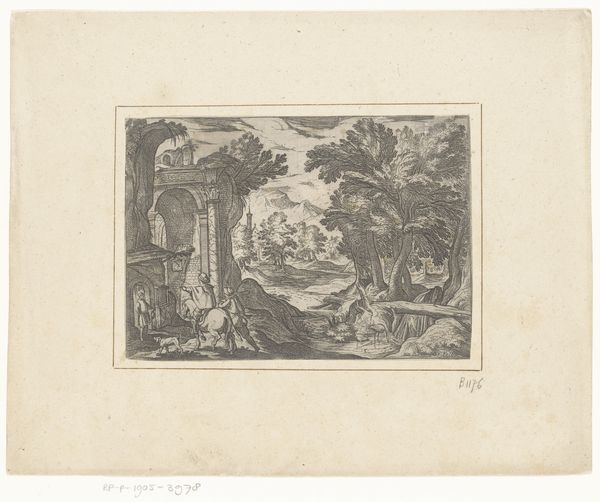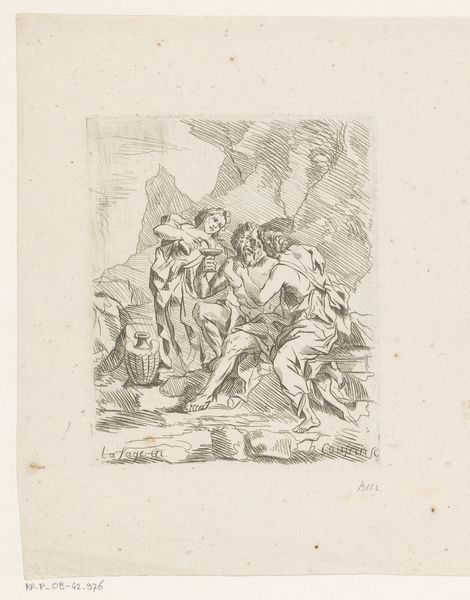
Dimensions: height 203 mm, width 168 mm
Copyright: Rijks Museum: Open Domain
Curator: Here we have a pencil drawing titled "Coolen Makes a Tigre Hunt," estimated to be from between 1820 and 1850. Editor: My immediate impression is one of subdued tension, a quiet but palpable anticipation hanging in the air within this dense jungle setting. The monochromatic palette enhances the drama, doesn’t it? Curator: Indeed. The Romantic era leaned heavily into dramatic, emotionally charged scenes. Consider how genre painting rose to prominence during this period; this work seems to straddle both. Tiger hunts were a frequent motif used by Western European colonizers when depicting themselves as brave and conquering in the so-called orient, a phenomenon observed broadly within orientalist art trends during this period. Editor: I see that. The rendering of textures, from the dense foliage to the tiger's striped coat, really commands my attention. Note how the artist uses cross-hatching to build up tone, creating a convincing sense of depth, even in such a seemingly simple medium as pencil. The foreground seems a bit less resolved than the more clearly worked details of the background. Curator: You pinpoint something key: the tension between the exotic and the familiar in this artwork, as well as the political forces shaping the artwork's narrative and the context surrounding the depicted action, namely hunting by Western colonists and figures within the so-called orient. This composition prompts inquiry into how dominant ideologies and values seep into supposedly objective, picturesque scenes. Editor: Precisely! And how the pencil medium, through its inherent delicacy and malleability, lends itself to express both the awe-inspiring grandeur and inherent violence and drama of the encounter between colonizer and environment, observer and observed. Curator: An intersection of Romanticism’s ideals and budding Orientalism is thus visible, prompting discussion about colonialism, class dynamics, and aesthetic choices of that time. Thank you for helping unpack this dense set of contextual and theoretical interpretations. Editor: My pleasure! Delving into both the "what" and "why" has really shifted my initial impressions of quiet tension toward seeing it as the silent manifestation of imperial hubris, rendered via close attention to line and the application of value.
Comments
No comments
Be the first to comment and join the conversation on the ultimate creative platform.
